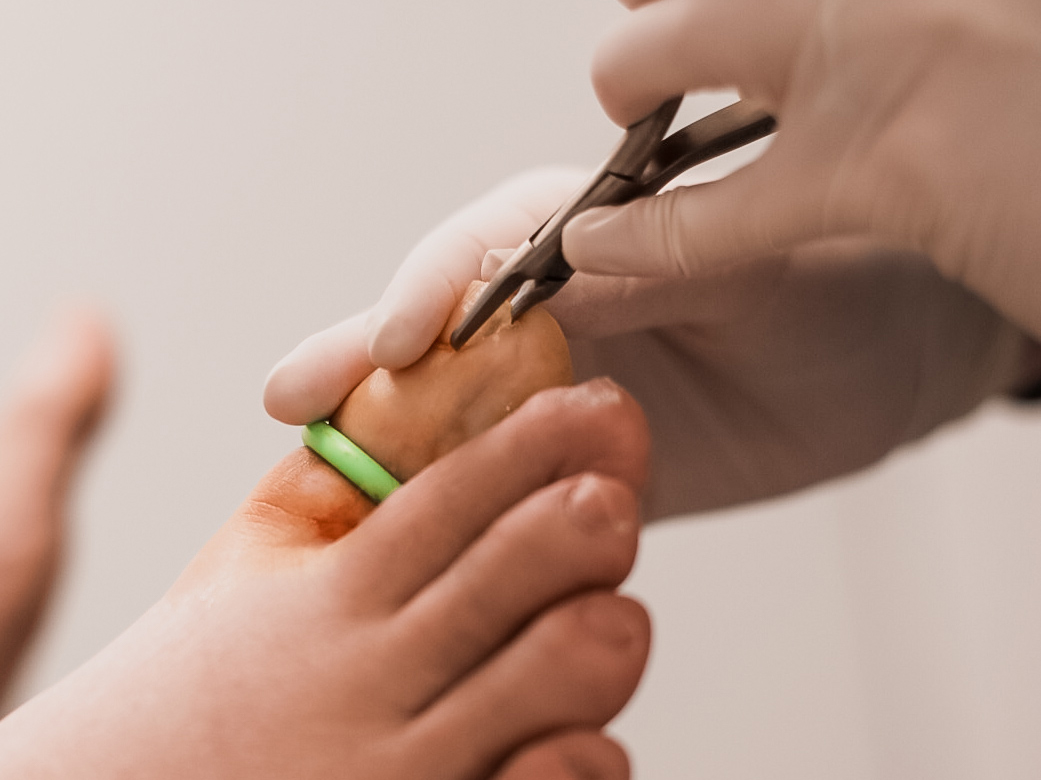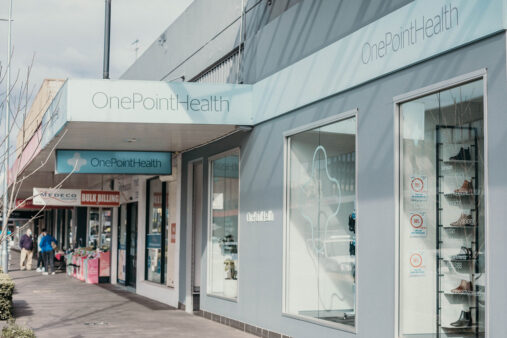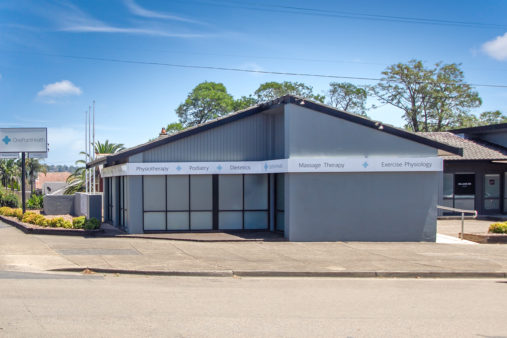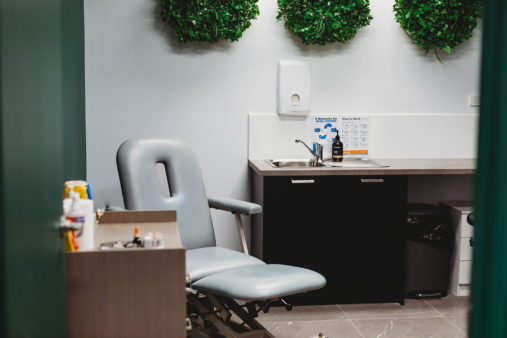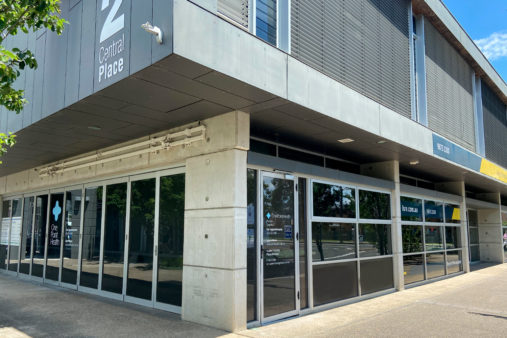Ingrown toenail surgery can be a highly effective method in treating infected or ingrown toenails, particularly after conservative methods have failed or a recurring ingrowing toenail is present.
What is an ingrown toenail?
An In-growing toenail (unguis incarnatus) or (onychocryptosis) is a painful condition affecting the foot in which the edge of a nail grows into the surrounding soft tissue (periungual skin) causing inflammation, pain, discomfort, and subsequent infection. This is most commonly seen to affect the big toe (hallux) and can be caused by numerous factors. Ingrown toenails are often very painful and if left untreated can result in significant infections.
Generally, a Podiatrist will class your ingrown nail as one of two types, “Onychocryptosis” or an “involuted nail”. Onychocryptosis describes when a spick of the nail is penetrating the flesh and often has a sudden onset. However, an involuted nail describes when a nail presents with a curled “C” shaped appearance and may often progress over a long period of time. Treatment and management range from conservative treatments to extensive surgical approaches, depending on the severity and stage of your Ingrown toenail.
What are the risk factors for ingrown toenails?
Where there is not ALWAYS an identifiable cause for your ingrown toenail an assessment by your Podiatrist can often be beneficial to help identify any risk factors.
Most commonly the causes of an ingrown toenail are due to improper toenail-cutting practices where either the nails are cut too short or the nails have been cut down the sides inappropriately. Other causes include wearing shoes that are too narrow, fungal infections, hyperhidrosis (excessive sweating) nail trauma, some medications, genetics and even the biomechanics and structural anatomy of your foot can have an influence on your ingrown toenail.
Who is affected by ingrown toenails?
Ingrown toenails do not discriminate and can affect anyone and all ages but those patients at a particularly heightened risk of complications are patients who are immunocompromised, have circulation problems or are diabetic. Due to the high incidence of infections related to ingrown nails prompt treatment is essential for these population groups.
Reports have noted that 2.5-5% of the population suffers from Ingrown toenails and the incidence and prevalence appear to be increasing in more recent times. The incidence peaks in adolescents between the ages of 12-30 with a clear male predominance, with males being affected twice as much as females.
What are the symptoms of ingrown toenails?
Symptoms of an ingrown nail vary depending on the stage of diagnosis. Generally, Ingrown toenails first present as a sharp painful sensation with or without mild bleeding. Followed by redness and swelling. If left untreated the presence of heat, significant swelling, puss (exudate), excessive skin growth (hypertrophic granulation tissue), extensive pain and increased disability can result. More alarmingly Ingrown nails when becoming infected can result in systemic infections presenting as flu-like symptoms which need immediate treatment.
Your Podiatrist will often class your ingrown toenail into 1 of 3 stages:
Stage 1
The nail has grown into the skin on the side. The skin hurts and has become red and inflamed.
Stage 2
Acute infection with the presents of discharge (exudate), inflamed tissue has grown at the edges of the ingrown toenail (granuloma).
Stage 3
Chronic infection, the skin around the toenail is inflamed and oozing pus. The granuloma has already started growing over the nail thus increasing pressure and pain.
How are ingrown toenails diagnosed?
Diagnosis of an ingrown toenail is usually quite straightforward however is important in order to tailor the treatment of your toe accordingly. A combination of visual assessment, your current signs and symptoms and identifying causative factors are all very important factors your Podiatrist considers when diagnosing and treating ingrown toenails. In order to effectively treat the ingrown toenail your Podiatrist at OnePointHealth may choose to involve your general practitioner if antibiotics are required.
Treatments for ingrown toenails
The treatment for ingrown toenails needs to be selected by your Podiatrist carefully in order to achieve the most desirable outcomes. Treatments can range from conservative techniques to surgical interventions and are often based on the stage in which the ingrown toenails have been diagnosed. Conservative modalities are often favoured in mild to moderate cases (stages 1 and 2) where severe cases (stage 3) may need surgical intervention.
Other factors that Your OnePointHealth Podiatrist will consider are any prior treatments conducted, the causative factors and any incidences of recurrence. Additionally, treatment selection may be influenced by internal factors including specific allergies, patients who are pregnant, any bleeding disorders or substantial medical histories.
General conservative measures
General or conservative measures for ingrown toenails include:
- Podiatry nail resection: Involving a Podiatrist to conservatively cut out the nail spicule with or without local anaesthetic and is often the first line treatment for patients in stages 1 or 2.
- Footwear advice: Proper footwear selection ensures adequate room in the toe box.
- Correct nail trimming and education: This includes avoiding curved cutting and leaving sharp edges.
- Soaking the affected toe: the use of warm salt water for several minutes may be advised to help reduce infection and bacterial load.
Surgical Techniques
Surgical procedures for ingrown toenails are performed under local anaesthesia (LA). At OnePointHealth your Podiatrist will administer 2 injections of LA to the toe ensuring complete loss of pain sensation (anaesthesia).
Where there are many types of nail surgery at One Point Health our team of Podiatrists offers.
- Partial Nail Avulsion with phenol
- Total Nail Avulsion with phenol
Partial Nail Avulsion (PNA)
After administering the LA injection and achieving complete anaesthesia your toe will be covered with Iodine (or chlorhexidine) before a tourniquet is applied to minimize bleeding during the procedure. It is normal to feel slight pressure and movement during the procedure however no pain will be experienced. The Podiatrist will then remove the nail spick or involuted nail as well as ensure to remove the nail matrix which lives at the very base of the nail. Once this is completed the chemical cauterisation is achieved using phenol to ensure the nail does not ingrow again.
Studies have shown that the application of phenol during partial nail avulsion reduces the chances of ingrown nail recurrence to 0–4.4%. Following phenol application, the toe will be cleaned and dressed accordingly, the tourniquet is removed, and the procedure will be concluded. We highly recommend bringing sandals or thongs that will accommodate the bandage applied to the toe and driving is not advised for 24 hours. Over the next few hours as the local anaesthetic wears off mild/moderate pain is usual and expected but should be settled with basic over-the-counter pain medication such as Panadol if needed.
Keeping the foot elevated and resting is also advised. All patients are recommended to return after 48 hours and again after 7 days for re-dressings and reviews. It is anticipated that full recovery will be achieved within 4-6 weeks depending on patient dressing adherence and aftercare.
Total Nail Avulsion (TNA)
Total nail avulsions follow the same procedure as the PNA procedure above however require complete resection of the nail and application of phenol so the nail does not regrow.
